Posts filed under ‘Tips and Tools’
How to Engage your Talent During these Tough Times
 When times are toughest, fear and worry strike most people, but when companies fail to nurture and take care of their best talent and prized workers, the whole company falters. Many companies today are doing a poor job at truly nurturing their people, as when the economy is down, managers address the most urgent problems first and often ignore their team. What can you do to best engage your talent? We found this article by author Sylvia Ann Hewlett and wanted to pass some of her tips along to you.
When times are toughest, fear and worry strike most people, but when companies fail to nurture and take care of their best talent and prized workers, the whole company falters. Many companies today are doing a poor job at truly nurturing their people, as when the economy is down, managers address the most urgent problems first and often ignore their team. What can you do to best engage your talent? We found this article by author Sylvia Ann Hewlett and wanted to pass some of her tips along to you.
By Sylvia Ann Hewlett and Susan Berfield, Newsweek:
“It won’t surprise too many people to hear that loyalty, trust, and engagement at work have been diminished during the Great Recession: We all know talented people who have become disaffected. Maybe we’re even one of them. Put all those people together, and it becomes a daunting managerial challenge. Sylvia Ann Hewlett, founder of the Center for Work-Life Policy, took stock of the situation at some of the world’s most powerful corporations, including Ernst & Young, General Electric (GE), Goldman Sachs (GS), Intel (INTC), and Johnson & Johnson (JNJ), all of which are members of the center’s Hidden Brain Drain Task Force. Here are excerpts from Hewlett’s new book, Top Talent: Keeping Performance Up When Business Is Down.
In these bleak times, companies are depending on their star performers as never before. Organizations need their top talent to be in peak form—firing on all cylinders—so they can succeed in a market that is the toughest in living memory. How are employers handling this challenge? In a word, badly.
To start with, leaders are seriously distracted. Caught between clamoring clients and vaporizing value, a CEO understandably might find it hard to focus on talent. People issues tend to translate into layoff strategies: How many should you let go? How should the cuts be distributed? Should you act surgically and strike deep or should you dribble out the reductions over time? When it comes to talent management, CEOs are also hamstrung by outmoded thinking. In times like these—marked by massive losses and rising unemployment—it’s tempting to imagine that there’s no need to worry about motivating talent. People are so grateful to have a job, the conventional thinking goes, that they can be relied on to contribute 110%. Right? Wrong.
Cutting-edge research from the Center for Work-Life Policy’s Hidden Brain Drain Task Force reveals the danger in conventional assumptions about sustaining high performance in tough times. Consider these critical and disturbing data points: In the wake of a mass layoffs, voluntary attrition can be deeper than the cuts themselves. A Center for Work-Life Policy survey shows that between June 2008 and January 2009, 14% of college graduates lost their jobs—of these, 32% were fired but an additional 68% voluntarily left their jobs. Participants in the Hidden Brain Drain strategy sessions were brutally honest when commenting on the impact of the current round of layoffs: 64% were considering leaving, and 24% were spending most of their time actively looking for another job. Those who stay report feeling disengaged, of being caught in long-term limbo: 74% of participants talked about being paralyzed, 73% felt demoralized, and 64% felt demotivated.
What’s an Executive to Do?
Overcommunicate. Everyone’s anxiety level is already off the charts. Silence from those supposedly in the know only makes it worse. When leaders don’t provide information, even the prized people whose positions seem safe start second-guessing what’s going on. The resulting rumor mill inevitably undermines trust. “You have to have the courage to talk, even if it’s just to say: ‘We don’t know,'” says Kathryn Quigley, head of talent management for the Americas at Credit Suisse (CS). “But whatever you do, you must say something, because people interpret saying nothing as meaning something bad.”
Take Charge of Your Talent
High performers thrive on acing challenges and surpassing goals. In tough times, many of the performance measures set up in rosier days no longer apply. Asking your top performers to pursue them anyway only sets up your best people for failure and creates bitterness and distrust. Smart managers channel team energy toward goals that are achievable in the current environment. Don’t assume everyone on your team knows the most productive use of her time. Under stress, even talented people often make bad decisions about which projects to focus on and how. You may have to become more of a micromanager to ensure that people are not only working hard but also smart.
Develop a Fair Restructuring Process
The “terms of disengagement” matter. Poorly handled layoffs leave a bad taste in the mouths of those employees shown the door and those picked to stay. Wayne Cascio, a business school professor at the University of Colorado Denver, looked at 18 years’ worth of downsizing data and found that even though expenses drop in the wake of large layoffs, revenues tend to drop, too—often disproportionately. This is because the remaining workers are coping with survivor syndrome—the anger, fear, anxiety, and decreased risk taking that follow a mass firing. One way to reduce the number of redundancies is by a creative use of flexible work arrangements. Accounting giant KPMG has developed an imaginative contingency plan called Flexible Futures, which was designed to decrease payroll costs while at the same time maintaining the firm’s deep commitment to its people. In January 2009 the firm gave its 11,000 U.K.-based employees four choices. They could volunteer for a four-day workweek and a 20% reduction in base pay; they could opt for a four-to-twelve week sabbatical at 30% base bay; they could opt for both; or they could stick to their current situation. “We were trying to deal with reality but also give employees some control over their own destiny,” says Rachel Campbell, head of people for KPMG Europe. To date, 85% of KPMG’s U.K.-based employees have signed up: The most popular choice is option three.”
Putting Values First– Procter & Gamble’s New CEO Charts a New Path
This July, P&G’s new CEO Bob McDonald took office, and since, has launched the company’s new mission… to be guided by Values, Principles & Purpose first. He believes, and teaches his company to believe in putting people –heart, mind, body– first and from this, profits will come. This is of course, a refreshing (and rare) outlook in light of the scandals, cut-throat capitalism, and unethical business dealings we as a nation have seen unfolding over the last few years… quite a sobering commentary on our society that this type of model of actually caring about people, is the exception and not the norm.
Envision a nation or society where the goal or main concern was caring about other human beings–caring about their wellbeing, caring about the poor, caring about helping others vs putting self first to make an easy profit. If this were the case, there would most likely be no Enron, no mortgage crisis, probably no economic downturn at all.
Of course, P&G still cares about making a profit, as the measurement or goal outcome from putting hearts and people first is, the bottom-line– increasing the dollars spent by consumers. Still, to learn about, and hopefully model our own companies after the P&G model is crucial and valuable to truly changing the upside-down values of our society’s companies.
P&G’s identiftied core values are…Integrity, Leadership, Ownership, Passion for Winning, Trust. Do you or does your company have core values that are followed? What about a purpose? To read more about P&G’s values and mission, go here: http://www.pg.com/company/who_we_are/ppv.shtml
And a good article about P&G’s value-led system by Rosabeth Moss Kanter that is worth reading can be found here: http://blogs.harvardbusiness.org/kanter/2009/09/fall-like-a-lehman-rise-like-a.html Although,there was an example of P&G’s values-put-first given here where Kanter recounts P&G”s work in Brasil, where, spurred by a slipping market, P&G employees took note of some of the realities of Brazilian families’ lives and noted that they spent too much time washing cloth diapers by hands, so of course, introduced disposable diapers to the consumers. While I see the value in saving time, (and increasing P&G’s Brasil market profit), what about the enormous environmental down-side of changing an entire market from cloth to plastic diapers? I was just wondering about if this really was a positive change for Brasil’s families and country, or, if this just appeared to be a good change but long-term would have negative consequences for the environment, health and well-being of Brasil and its people. When a company has such far-reaching impact on whole groups and nations, there must be thoughtfulness in every choice made. Your thoughts?
Five “Laws of the Mind”: Words of Wisdom from the Past
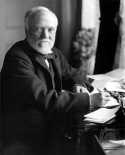 By Joyce Friel
By Joyce Friel
Andrew Carneige’s impact on the US is still evident in many ways today. In particular, the great buildings he provided for cultural advancement as a way of giving back to the community. He had 5 ‘laws of the mind’ he used to guide his focus and, consequently, drive his results. They are just as appropriate today as they were in Carneige’s time.
They are:
1. Fix your goal firmly and precisely in your mind. Precision is key.
2. Determine what you intend to give in return for reaching your objective. In his case, it was often buildings and public works. So clearly giving back was a key ingredient to his success, it wasn’t just a nice thing to do with his wealth. When you give back, others continue to use your services and products so a self-fulfilling prophecy gets established.
3. Establish specific dates when you intend to have achieved your goal.
4. Create a definite plan and commit it to writing.
5. Read your plan twice a day. Keep it top of mind. What you focus on is what you get.
Great words to live. And there is tremendous evidence that Carneige’s formula works. What is the goal you want to achieve. How about using this 5-step plan to make it become a reality!
America’s management practices: Remember…you can’t change organizational behavior without changing human behavior!
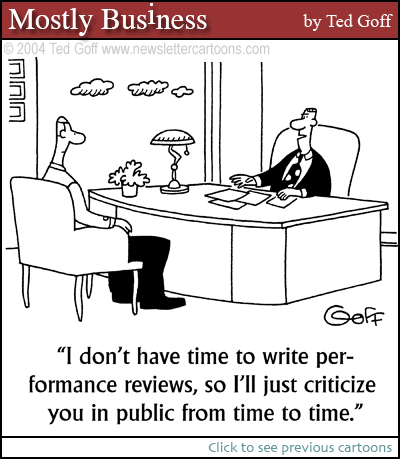 The mainstream seems to be finally catching on… After decades of unchanging business management practices that American businesses have, by habit, been repeating, (layoffs, performance reviews etc.) we see now that these methods are at best unhelpful, and at worst, destructive to employee motivation. What changes organizations? Changing human behavior!
The mainstream seems to be finally catching on… After decades of unchanging business management practices that American businesses have, by habit, been repeating, (layoffs, performance reviews etc.) we see now that these methods are at best unhelpful, and at worst, destructive to employee motivation. What changes organizations? Changing human behavior!
An interesting list of 13 common, habitual practices our nation’s management uses that don’t work:
From Business Week, by Aubrey C Daniels, to read full article go here: http://www.businessweek.com/managing/content/aug2009/ca20090811_861931.htm
With executives under fire for driving their companies into the ground—and taking the economy with them—it’s time for a managerial paradigm shift that focuses on the root of all booms and busts: individual behavior. Many time-honored management practices, such as layoffs, yearend bonuses, and automatic pay raises, actually reward employees’ bad habits and punish good behavior, often with devastating results.
These practices stem from theories of performance that have little to do with the science of learning. As such, they result in many mistakes initiated by senior leadership at great cost. They’re endorsed for the best of reasons but fail to lead to the desired result.
So why do so many organizations continue to embrace faulty practices? My 30 years of experience with Corporate America have led me to believe most business leaders are trained in the math of balance sheets, not the science of human behavior. They don’t understand that you can’t change organizational behavior without changing human behavior. Only when managers understand the basic principles of behavioral science and apply them skillfully will they realize the full potential of their employees and their organizations.
A Chance for Change
While management in general is proving challenging today, there is a silver lining to this current economic crisis: It provides a rare opportunity for managers to rethink and reform the way they run their organizations, using an approach grounded in science and research rather than in dubious habits. Businesses have been wasting time, funds, and resources on the same tired approaches for years. This crisis can actually provide us with a chance to start fresh and set in motion a sea change in the way we manage behavior and performance.
Please see a slide show featuring 13 universally used, but ultimately ineffective, management practices—and prescriptions for how to change them.
What lessons can we learn from Ted Kennedy’s leadership style?
We came across this great article posted by Rosabeth Moss Kanter on her blog  http://blogs.harvardbusiness.org/kanter/ and we wanted to share. From Kennedy’s life we can take away some significant leadership lessons: leading with a purpose, making a difference, perseverance, staying true to roots and family: these qualities in leadership truly matter and are worth cultivating in our own quests and lives.
http://blogs.harvardbusiness.org/kanter/ and we wanted to share. From Kennedy’s life we can take away some significant leadership lessons: leading with a purpose, making a difference, perseverance, staying true to roots and family: these qualities in leadership truly matter and are worth cultivating in our own quests and lives.
Ted Kennedy’s Leadership Lessons By Rosabeth Moss Kanter
Senator Edward M. Kennedy, whose loss America is mourning, was no darling of the traditional big business community. He fought for the little guy, for children, for the poor and disadvantaged, sometimes against establishments and elites.
But as a leader, he was greatly admired across the political spectrum. Even those who disagreed with his politics can draw inspiration from his life. From knowing and observing him, I choose four leadership lessons I hope executives will take to heart.
Remember that performance is everything. No one is entitled to a position. When Ted Kennedy won his Senate seat for the first time during the Presidency of his brother, Jack Kennedy, critics said that he inherited his position in the family business and bought his way into the Senate through favoritism. Critics dismissed him as a weak younger brother who would be merely a celebrity Senator. How wrong they were. Ted Kennedy’s route to the Senate stopped mattering once he began performing for his constituents and collaborating with his colleagues.
Kennedy did not rely on dynasty as destiny. He rolled up his sleeves and mastered the details, and he kept studying and learning as the issues changed. No one is entitled to a top executive position; everyone has to earn it through his or her deeds, and each is only as good as his or her command of the issues. When Mitt Romney challenged Kennedy for his Senate seat in 1994, the pivotal moment of their debate — which probably won Kennedy re-election — involved Kennedy pressing Romney for specifics on his health care plan, with Romney finally admitting he hadn’t worked out all the details. “Well that’s what you have to do with legislation,” the Senator replied. Kennedy knew the job. His career rewards followed from his service. His career rewards followed from his service.
Even when Kennedy could not move the needle forward on really big change (health care reform), he supported incremental improvements (children’s health insurance), which meant that he survived in office long enough for his big agenda to come close to being enacted.
Find a higher purpose. Think values first, and suspend ego.Ted Kennedy believed in public service as an honorable profession and in government as a vehicle for helping all citizens get their chance for high quality of life. Once he found his core mission (after losses and setbacks), it was clear where he stood and who he stood for — other people who needed a voice because they couldn’t always speak for themselves.
This was not about Ted Kennedy or his ego. He was known for humility, graciousness, and geniality in the Senate; he was not engaged in partisan contests to win for the sake of winning. The goals were so important that he was willing to work with political opponents to reach agreement on measures that served the people. His work with Republican Senator Orrin Hatch was a model for collaboration that transcended ideological disagreements. He supported President Bush’s No Child Left Behind legislation for school reform; the cause of children was so important that he would rather compromise and get a little something done than prevent any action. Negotiating by calling on higher principles made him effective with principled members of the other party.
Business leaders who operate from a sense of values and purpose — a theme of my new book SuperCorp — are similarly able to win adherents and negotiate better deals, because they suspend ego in support of a cause larger than themselves. By working for others rather than scrambling for career advantage, they enhance their own reputations. And the work is more important than title or position. Ted Kennedy will go down in history as the Lion of the Senate and one of the most important figures of our time, although he was not the President, nor even the “CEO” of the Senate or his party. His mission gave him moral power as important as position power.
Keep going. Ted Kennedy faced numerous public crises, any one of which could have destroyed him, yet he proved resilient and able to learn. Through strong efforts on behalf of the greater good, he restored confidence in his leadership. The still-mysterious incident at Chappaquiddick in which a young woman drowned nearly drowned his career, too; far from showing courage, he ducked accountability. But Kennedy bounced back by redoubling his efforts to do his job well. He fumbled in his bid for the Democratic Presidential nomination in 1980, but recovered by devoting even more energy and passion to his work in the Senate.
Never forget family. The hard-working Kennedy was a model for executive dads. De facto father to several touch-football-game’s worth of children (his own and those of his late brothers and formidable sisters), he organized weekend outings to Civil War battlefields and made sure they studied their history lessons. Family was at the center of his satisfaction in life. At the Kennedy compound at Hyannis Port, which I toured with him, he showed pictures of the late President John F. Kennedy and late Attorney General Robert Kennedy and talked of them as if still alive. The consummate professional whose greatness grew every year was still, at heart, a family man. His concern for relationships, and the love that guided his family through numerous tragedies, gave him the strength to take on tough challenges.
Business leaders should heed that lesson above all: Performance, mission, and endurance are possible because the people we support and care about also support us.
212 Degrees to Boiling
We wanted to pass along this very short inspirational movie/video… at 211 degrees water is HOT, but add one degree, and at 212 degrees, water boils, produces steam and can produce enough energy to run a train! This is worth watching… it takes EFFORT, ENERGY and WORK to be great, produce results, make a difference… to change your life!
Company Case Study: New P&G CEO Bob McDonald on How to Improve Lives for People Who Cannot Afford Products
Here is a great case study example of how P&G found a way to improve lives and save water for consumers in the Philippines with the innovation of a product called Downy Single Rinse:
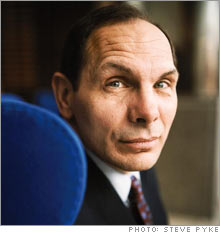 From Forbes: On the Call: P&G CEO Bob McDonald
From Forbes: On the Call: P&G CEO Bob McDonald
Associated Press, 08.05.09,
“The Procter & Gamble Co. uses a slogan that its consumer products touch and improve lives. Traditionally, that’s meant with “new and improved” innovations of Tide detergent and Crest toothpaste and other products.
But the company is pushing to increase sales in developing countries where per capita incomes are far below U.S. consumers, in a global recession. Bob McDonald, who took over July 1 as CEO, discussed the challenge in P&G’s fourth-quarter earnings conference call with analysts.
QUESTION:
I know you want to change lives, but what if people can’t afford to change their lives?
RESPONSE:
One of the things we’ve learned is that, in order to improve the lives of people that tend to be toward the bottom of the economic pyramid, you have to innovate for the best consumer experience for those people. It’s not a matter of trickling down higher-tier technology.
A great example of that is Downy Single Rinse, which we began developing in the Philippines some years ago. This was an opportunity for Filipino consumers who rinse their clothes five times with clear water in order to get rid of the soap, to use a product that added fragrance, some degree of softness, but also, importantly, sequestered the suds that were in the water and allowed them to go from five rinses to one.
And basically, the product pays for itself because of the water that they save.”
Working With/For an Ineffective Boss
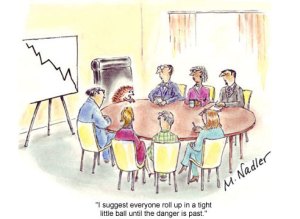 by Joyce Friel
by Joyce Friel
Micro managing, asking the impossible, narcissistic, requesting actions that are on the verge of being unethical, blocking team effectiveness, and on and on. Sound familiar? For some of you this is all too familiar and very frustrating. The boss from Hell, you think. What to do?
 There are many contributing factors and a pat answer that is easy to give in this short blog is, of course, not the only solution and maybe not even the right one, but here are some thoughts that may be useful to you if this situation describes your daily worklife.
There are many contributing factors and a pat answer that is easy to give in this short blog is, of course, not the only solution and maybe not even the right one, but here are some thoughts that may be useful to you if this situation describes your daily worklife.
The boss from Hell is often behaving the way they are because they don’t know how to perform otherwise. They don’t know how to produce results in a more effective way. While it may not look right to you and it may seem downright wrong, they may be doing the best they know how to do.
So some things you can do to help yourself, them and your team be effective and ease the frustration are to:
* Be the example of what should be done – help them learn vicariously by your example
* Do everything you can to help your boss and your team be successful (short of doing things that they request you to do that may be unethical). The boss wants to be successful – help them deliver results and they are more likely to stay off your case and out of your way.
* People do what they do because of what happens to them when they do it…so the boss must be continuing their frustrating behavior because their superiors believe they are delivering results. After all, that is ultimately the bottom-line definition of success in almost any organization.
* Analyze to figure out what ‘reward’ the boss seems to be getting as a result of their behavior. They are being reinforced somehow or they wouldn’t continue. (Are they getting attention of others? Are they causing the team to work harder to produce results? Are they getting promotions? Are they admired for some reason in their peers eyes?)
If all else fails and you’re ready to take some risks…
* If the entire team is ready to take some action, then collectively they may be able to discuss the situation with your HR department or a person in a higher position, but do this very cautiously and be prepared for any consequences that may occur as a result. As I mentioned, likely people in higher positions know of this person’s behavior and continue to leave them in their position because of the results they produce. That doesn’t make it right, but it does explain the situation.
* You can transfer to a different position within the organization.
* You can find effective behavioral change management help for the person by suggesting an executive coach might be good for everyone on the team and as a result they get assistance also.
They will not change until the consequences of their actions change and until they become aware of the impact they are having on others. And even at that, they will only change if they want to.
You can agonize over and be very frustrated with the behavior of others, but you cannot make them change and you cannot own their behavior. The only thing you can control is your own reaction to their behavior. Helping someone else always started with examining our own behavior first.
Learning to Lead
 Leaders learn through experience.
Leaders learn through experience.
One of the key characteristics of leaders is that they are learners. This can be readily discerned when interviewing an espoused leader by asking the question, “Tell me about a time you failed as a leader and what you learned from it?”
If they can’t identify a time, be cautious. The reality of their leadership capability may be only in their mind and not exhibited in their behaviors.
Experienced leaders who have been tested in the crucible and made it through can easily remember examples of where they have not been effective or failed in their leadership. And, they can share with you what they have intentionally done or changed to adjust for the failure based on their learning. These changes will usually be in their beliefs about people or in their behaviors when leading people.
I well recall an instance when I first started in supervision and had a group where significant change was required to expand the departments capacity for work. I was to lead this change and managed to get through it although I lost the department’s best performer. I attributed this lose to her lack of interest in using the new technology we had implemented.
Months after the change a friend of mine suggested that people in this department felt I was not fair, too pushy and caused the person to leave based on the unfair expectations I had placed on her for work output. This feeling was still being harbored in the group today.
In short, I asked the group to hang around after work one evening and asked them their thoughts regarding what I had heard. What a great learning experience! I had been a lousy leader, even though I got the job done.
I called the person who left and apologized for my poor behavior, and she agreed to come back to work for us. From that point on, I led in a much more open, involving and trusting manner where people were asked for input, allowed to volunteer for assignments, could suggest better ways to accomplish tasks, etc.
Never again did I think I knew all the answers, and never again did I take advantage of top performers by overloading them with work.
Looking back, it doesn’t seem like much, but today, I know it has shaped my leadership style and techniques as much as any failure I have had since that time.
What leadership failures have you learned from? (BTW – this could be called failing forward if it helps as a memory tickler)
Chad
How you respond to the economy is a CHOICE
 I believe there are three key measurements for today’s uncertain economic environment.
I believe there are three key measurements for today’s uncertain economic environment.
1. Accelerating pace of change.
2. Our key response is fear, anxiety, insecurity, which according to Bright Side’s research and interviews is increasing.
3. The key sustainable advantage is our expanded capacity to learn/unlearn/relearn in the moment every moment.
Today’s recession reminds me of experiences I had over 25 years ago when I developed Bright Side’s personal change-leader model to expand my own capacity and the capacity of others, their teams, their organizations to be more equipped to lead toward the future dreams and desired business outcomes. My past experiences, both my past positive experiences and my past negative experiences continue to be triggered for me today and could limit or minimize the impact that I personally can and want to have and Bright Side can and wants to have.
And how I respond to those triggers is a choice: Yes, the recession is knocking on my door and I am choosing to not answer it.
The personal leader model is as relevant today as when I lost my job in the machine tool industry during the early 1980’s. Not only did I lose my job, I watched an entire industry collapse. I, along with many other Americans, was stuck in a view of arrogance, ‘Ohio is the machine tools capitol of the world, other countries make junk.’ After traveling to Japan in 1981, working with the Father of Quality, Dr. W. Edwards Deming, I began to wonder, have an insight, that perhaps I was experiencing the early side of a trend and I could ignore it or learn about it and take action to embrace and lead from that trend.
That failure became the impetus for the Bright Side model…
The Strength and Leadership of Women
 This is an excerpt from a workshop presentation I recently gave at a Senior Executive Women’s Event for a Fortune 50 company…. here’s just the beginning… Donna Rae
This is an excerpt from a workshop presentation I recently gave at a Senior Executive Women’s Event for a Fortune 50 company…. here’s just the beginning… Donna Rae
“Keep your face to the sunshine and you cannot see the shadows’, composed by Helen Keller, more than 50 years ago has inspired me throughout my life.
Helen Keller, encumbered with an inability to speak, see or hear, become one of the world’s most inspirational voices – and most heard voices.
Helen Keller, a voice of courage, ensuring her voice was heard.
Like each and every woman today, Keller realized amazing accomplishments. To be here, we all have accomplished much, aspire to go beyond, and perhaps we have daring dreams. Yes, we have come along way by overcoming barriers and still confronting barriers today.
I believe the world needs women, the voices of women, and the intrinsic strengths of women more today than ever before. Our intrinsic strengths of connecting, collaborating, open & transparent risk taking, learning from our failures, our insightfulness, deep intuition, and our capacity to be voices of persuasion with the utmost of integrity.
And today provides an opportunity, a personal leadership experience, for our presence, our voices, and our natural strengths as women to be heard.
During today’s session, I will provide you with interactive experiences and tools to expand your personal leadership capability in new and different ways. I will also provide you with a personal leader development model that you will be able to immediately take into action once the session ends.
Even though you do not know how the next two hours are designed, I would like you to reflect on what would make this event meaningful for you personally. And for you to have that meaningful outcome, what are you willing to do to make that happen? What are you willing to do, think, say, ask – that is different – and is a stretch for you?…”
Context – An Empowering Enabler
 Disempowered people work in a vacuum. They do what they are told and are limited to taking safe, prescribed actions and making secure, pre-approved decisions. They have no need for understanding the context within which they take action. Some roles require this type of standardization and control. They are roles that eventually will be automated or disappear as systems and infrastructure mature to where the roles are no longer necessary.
Disempowered people work in a vacuum. They do what they are told and are limited to taking safe, prescribed actions and making secure, pre-approved decisions. They have no need for understanding the context within which they take action. Some roles require this type of standardization and control. They are roles that eventually will be automated or disappear as systems and infrastructure mature to where the roles are no longer necessary.
For more mature roles that require independent action, problem-solvingand decision-making a more empoweringand enabling model for performance and accountability is necessary. Leaders need to provide context for these individuals so they can act without seeking approval every time a decision is required, and so that they can take action that best serves achieving the future state desired by the organization.
One powerful technique for helping these individuals perform within the parameters and in support of the direction the organization has chosen is to share the vision for the future that executive leadership has defined for the organization.
At the same time, a solid understanding of the current state in which the organization finds itself is important to understand such that the gap between the the present and the future is grasped and owned by those who must make independent decisions regarding how to move from where we are today to the future vision we have for the company. The key component of engaging others is necessary at this point as well as empowering and enabling.
We call this understanding of the current state, future state and gap – CONTEXT – because it provides high level awareness that clarifies direction, and paves the way with key strategies and behaviors required to move in a straight line toward the future in an accelerated manner. In essence, it builds a road from the current state to the future state, puts curbs on the road to keep people on the straight path, and equips them with maps, mile markers, gas, vehicles and behaviors – the resources necessary to assure the future destination is reached in a sustianable and accelerated manner, with as little resistance as possible.
Frequently, in our behavioral interviews of employees we find that people may not know the future state clearly and are operating to specific goal achievement only. They tend to operate with blinders on and march to the beat of only one drum.
In some cases, we find employees who seem to have a grasp of the future vision and are moving very rapidly toward it and outpacing the capability of the organization to support this movement. They seem to have no concept of the current state and are building unsustainable solutions for the future.
Lastly, we often find people who are off target completely and operating to historic precedence or taking independent actions that are in the wrong direction from the future vision, or tangential to it. They are slowing everybody down with their misapplication of resources.
All of these people are working hard and in some cases are working harder than they ever have in the past. Unfortunately, they are not really contributing to achieving the future state in a sustainable and accelerated way.
They need to understand the higher level context of where they are, where they are going and the key strategies and behaviors that are supported and resourced by the organization to help them get there
As a leader of leaders at all levels, context is one of the critical components when it comes to empowering and enabling others. Keep it in mind as you lead others to a new future for your organization.
What other aspects of context would you like to share?
Chad
Personal Productivity
Personal productivity is something toward which we all strive. We want to be able to accomplish more in a shorter time span and focus longer so we can strategize and implement better. We want to rid ourselves of all the small distractions and time-wasters that always seem to add up to more than we think. Before we know it, it’s 2 pm and we haven’t accomplished half of what we needed to that day.
Those of you wishing there were 25 hours in the day should listen up, because personal productivity is attainable. All it requires is a mental shift and change in daily behaviors and habits. Sound difficult? There is a simple method to obtain it if one is armed with an open-to-change attitude.
When Bonnie Curtis, Vice President of Global Oral Care at Procter & Gamble, charged her team the task of eliminating one hour per day of distraction and inefficiency during the merger with Gillette, she knew she was not assigning an easy task. Changing behaviors is something that takes time and dedicated repetition.
Curtis knew she wanted to change her team, but she also realized that she wanted to change how she personally worked within her team. For her, it was more than eliminating one hour of inefficiency per day. She took a look inside and objectively observed her actions and methods for work.
She wasn’t being as effective, she noted, if she held a grudge toward a person or kept a mental tally of errors. Her personal barrier against a colleague would prevent her from moving forward on a project or even talking to the person.
Curtis was also spending less time with her family. She consistently missed dinner, was absent at important sporting games and events for her children, and was distracted on the weekend. She wanted to be more present with her family and she knew something needed to change, which was Curtis’ first step in the right direction. By forming an awareness around what needs to be done, she was on her way toward personal change.
Curtis needed to release any tension she felt about her current state so she could reach her personal ideal future state: an 8-5 day that allowed her time with her family in the evenings and during the weekends. She needed to bridge the gap between her current state and ideal state. Once she formed an awareness around these dormant grudges, Curtis plowed forward and was able to work more effectively.
She replaced her personal barriers with optimism and the idea that she is a bold change leader, able to move her team forward but still keep her personal boundaries more intact. She built upon her own inner tenacity and launched forward, running herself through the Bright Side model anytime she needed to rid herself of barriers and distractions.
What about you? What will it take for you to rid yourself of personal distractions and inefficiencies?
The key to remember here: form an awareness on your current state, release any tension, replace it with the ideal, future state, and build upon it so that your change is sustainable and real.
-Shannon
Executive Interest in an interview about the impact of fear on business /results?
Hi, this is Donna Rae.
I am interested in identifying executives / managers who are who would be interested in scheduling an interview with me about the impact of fear on performance within your organization. The interview can be done over the telephone, is confidential, and expands the data we are collecting on fear and productivity.
I will provide a copy of the report to you and I will also provide coaching to you on strategic methods for creating a fearless organization.
We are all facing and feeling the impact of this intense, unpredictable, unstable climate. Identifying and removing fear barriers allows organizations and individuals to be agile, to be nimble and to adapt… boldly facing and moving through today’s challenges!
We can overcome fear, and thrive together!
Please either call, email me, or post a comment and we will set up a time to interview you.
donna rae
Adjusting My View of Current Reality
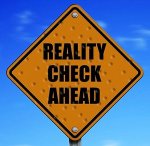 I just read an article that caused me to adjust my view and filters regarding current reality.
I just read an article that caused me to adjust my view and filters regarding current reality.
The article had research information about our current economy as well as information about our economy over the past fifty years.
Without getting into detail, it said we have been experiencing an anomaly during the past fifty years in that the economy was in a continual expansion mode (a few justifications and reasons for this were provided), and that our current economy is the reality of what it will be like in the future.
Well!!! This article caused me to contemplate what that could mean for leaders moving forward.
- Few to no leaders have experience from fifty years ago that aligns with the business needs of today’s reality – we are currently learning to lead in new and different ways as we experience day to day revelations in this new economic reality.
- A recalibration of what success looks like, sounds like, feels like and is measured like will be necessary. This will vary by the industry, function, situation in which leaders find themselves.
- The way in which people are led will be different in that aspirational career growth, positional movement, personal development, travel globally, compensation adjustments, etc. could be reduced or not available due to tighter management of budgets.
- Limited inventories and options will create the need for true leadership in selling versus order taking. Increased competition for discretionary monies will also require selling to step up and lead.
- Marketing will take on a different look as more targeted messages are designed for smaller, unique populations. Again, reduced budgets could drive an increased need for greater ROI per customer, so targeting to higher potential buyers will be necessary.
- Adroitness with new and existing technologies will be required to do more with less resources and increase the need for “high tech touch” to lead disseminated audiences of employees, customers, consumers, suppliers, collaborators, partners, etc.
- Leaders will be required to become very good at providing clarity of direction, priority, focus and metrics in order that these dispersed audiences can operate independently and still stay aligned with the organizational imperatives. Partnering beyond the traditional company boundaries will also require sharing these aspects of leadership with non-traditional entities in order to compete effectively.
- Leaders will also have to be better coaches, supporters, barrier-breakers and reinforcers of empowered followers in order to reduce errors and potential failure modes of operations as followers get up to speed and become leaders in their own business arenas.
- These more micro-focused organizations will require a strong core of strategic structure and infrastructure from which independence can be enabled in order to make better decisions at the point of performance, move with speed and agility, and maximize the cost/service/quality requirements of the target audience.
- Not to mention the leadership challenges for supply chain partnerships, purchasing reciprocity, legal licensing, financial refocusing, benefits contracting, recruiting & hiring, etc., etc.
I believe every strategic and functional aspect of how we have done business in the past is changing and that strong, agile, open to learning leadership will be required to challenge and adapt to the new economy as we move forward.
Okay, I shared some of my thoughts and filter changes.
What additional adds do you have based on our economy being more of the same as we have had this past year (2008-09), versus being the double-digit growth, fat and happy economy we have experienced since the 1950’s?
Chad
Recent Comments